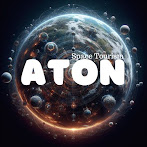The year is 2024, and four brave astronauts are about to embark on a historic journey. They are Reid Wiseman, Victor Glover, Christina Koch, and Jeremy Hansen, the crew of Artemis II, the first crewed mission of NASA's Orion spacecraft. Their mission is to fly around the Moon and return to Earth, testing the performance and safety of the Orion vehicle and the Space Launch System (SLS) rocket. They will also be the first humans to venture beyond low Earth orbit since Apollo 17 in 1972.
The countdown begins at Kennedy Space Center in Florida, where the massive SLS rocket stands ready on Launch Complex 39B. The crew boards the Orion capsule, which sits atop the rocket's second stage. They strap themselves in and go through the final checks. The launch director gives the go-ahead, and the engines ignite with a roar. The rocket lifts off, sending a plume of smoke and fire into the sky. The crew feels the acceleration as they soar into space.
The first stage of the SLS burns for about two minutes, then separates and falls back to Earth. The second stage takes over, boosting the Orion capsule into orbit. The crew checks their systems and reports that everything is nominal. They deploy the solar arrays and activate the communications antenna. They also enjoy the view of Earth from their windows, marveling at its beauty and fragility.
The Orion capsule orbits Earth for about six hours, then fires its engine again to escape Earth's gravity and head towards the Moon. The crew enters a coast phase, during which they monitor their spacecraft and conduct some experiments. They also have some time to relax, eat, sleep, and exercise. They communicate with mission control and their families, sharing their experiences and emotions.
After about three days, the Orion capsule approaches the Moon. The crew prepares for the lunar flyby, which will be the highlight of their mission. They will pass within 6,400 miles (10,300 kilometers) of the lunar surface, closer than any human has been since Apollo 17. They will also see the far side of the Moon, which is never visible from Earth. They will witness craters, mountains, valleys, and other features that have been shaped by billions of years of impacts and volcanic activity.
The lunar flyby lasts for about an hour, during which the crew takes pictures and videos of the Moon. They also collect scientific data and perform some maneuvers to test Orion's capabilities. They are awestruck by the sight of the Moon in their windows, feeling a connection with their predecessors who explored it decades ago. They also see Earth rising over the lunar horizon, a stunning contrast of blue and white against the gray and black of the Moon.
The Orion capsule swings around the Moon and heads back to Earth. The crew enters another coast phase, during which they repeat some of their activities from before. They also reflect on their accomplishment and what it means for humanity's future in space. They are part of NASA's Artemis program, which aims to create a sustainable presence on the Moon and pave the way for human exploration of Mars.
After about three days, the Orion capsule reaches Earth's atmosphere. The crew prepares for reentry, which will be the most challenging and dangerous part of their mission. They will experience high temperatures and forces as they plunge through the air at hypersonic speeds. They will also rely on Orion's heat shield and parachutes to protect them and slow them down.
The Orion capsule enters Earth's atmosphere at an angle of about 40 degrees. It begins to glow red-hot as it encounters friction from the air molecules. The crew feels intense vibrations and deceleration as they lose speed and altitude. They also experience radio blackout for about six minutes, during which they cannot communicate with mission control or anyone else.
The Orion capsule emerges from radio blackout at an altitude of about 25 miles (40 kilometers). It deploys two drogue parachutes to stabilize itself and slow down further. Then it deploys three main parachutes to reduce its speed to about 20 mph (32 km/h). The crew sees water below them as they approach their landing site in the Pacific Ocean.
The Orion capsule splashes down gently in the water, triggering cheers from mission control and spectators around the world. A recovery team arrives quickly to retrieve the capsule and its crew. The astronauts are helped out of their seats and onto a boat. They are greeted by medical staff who check their health and well-being. They are also welcomed by NASA officials who congratulate them on their successful mission.
The Artemis II mission is over, but it is only the beginning of a new era of human exploration of deep space. The crew has proven that Orion and SLS are capable of taking humans farther than ever before. They have also inspired millions of people with their courage and curiosity. They have paved the way for future missions that will land humans on the Moon for longer periods of time and eventually send them to Mars.
The Artemis II mission is a story of adventure, discovery, and achievement. It is a story of humanity's quest to explore the unknown and expand its horizons. It is a story of the Artemis generation, the next generation of space explorers.









No comments:
Post a Comment